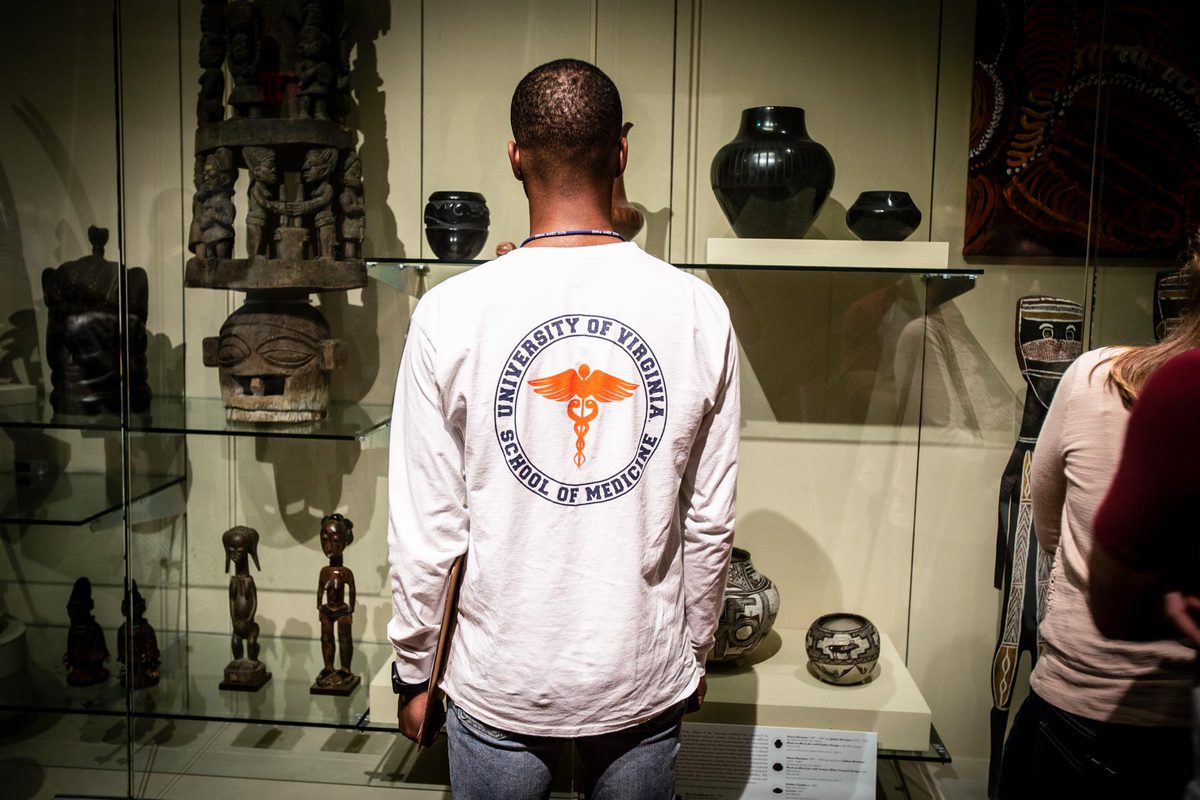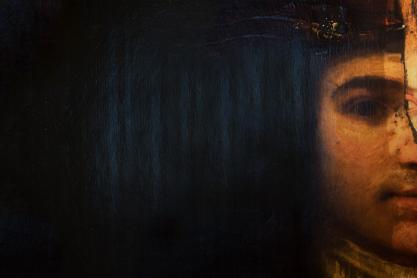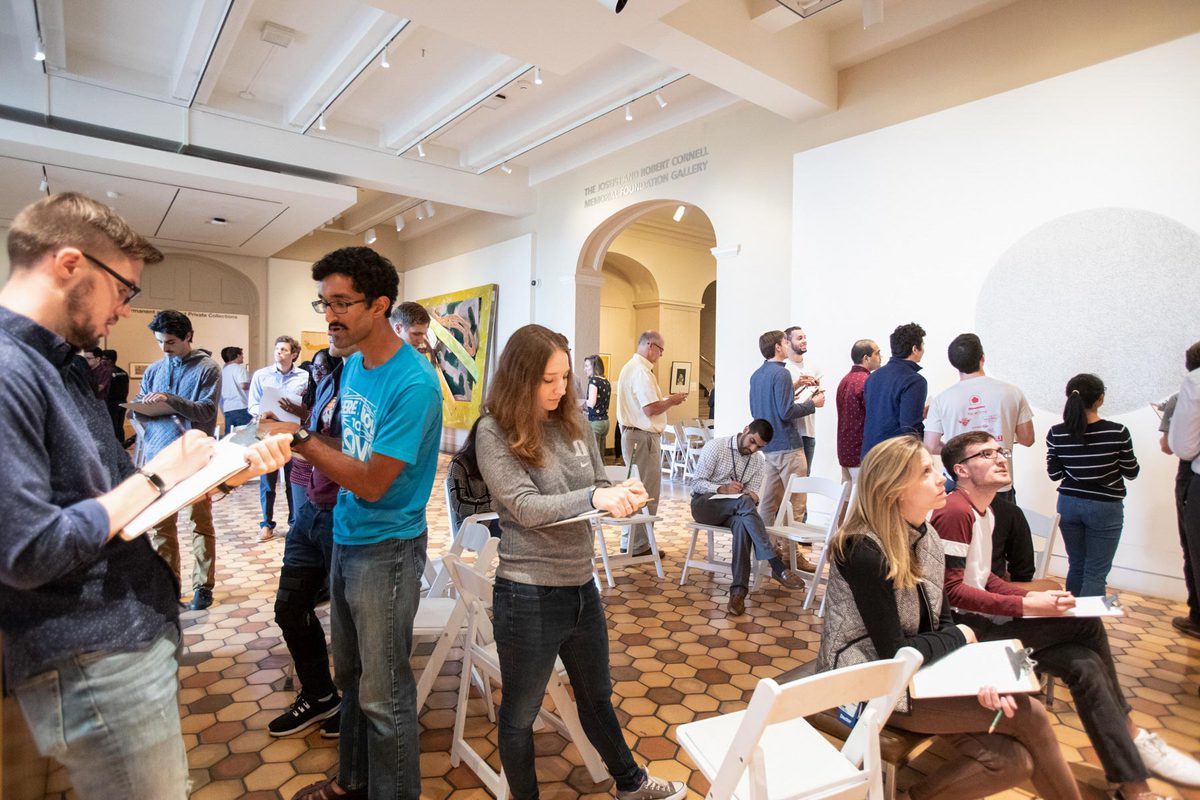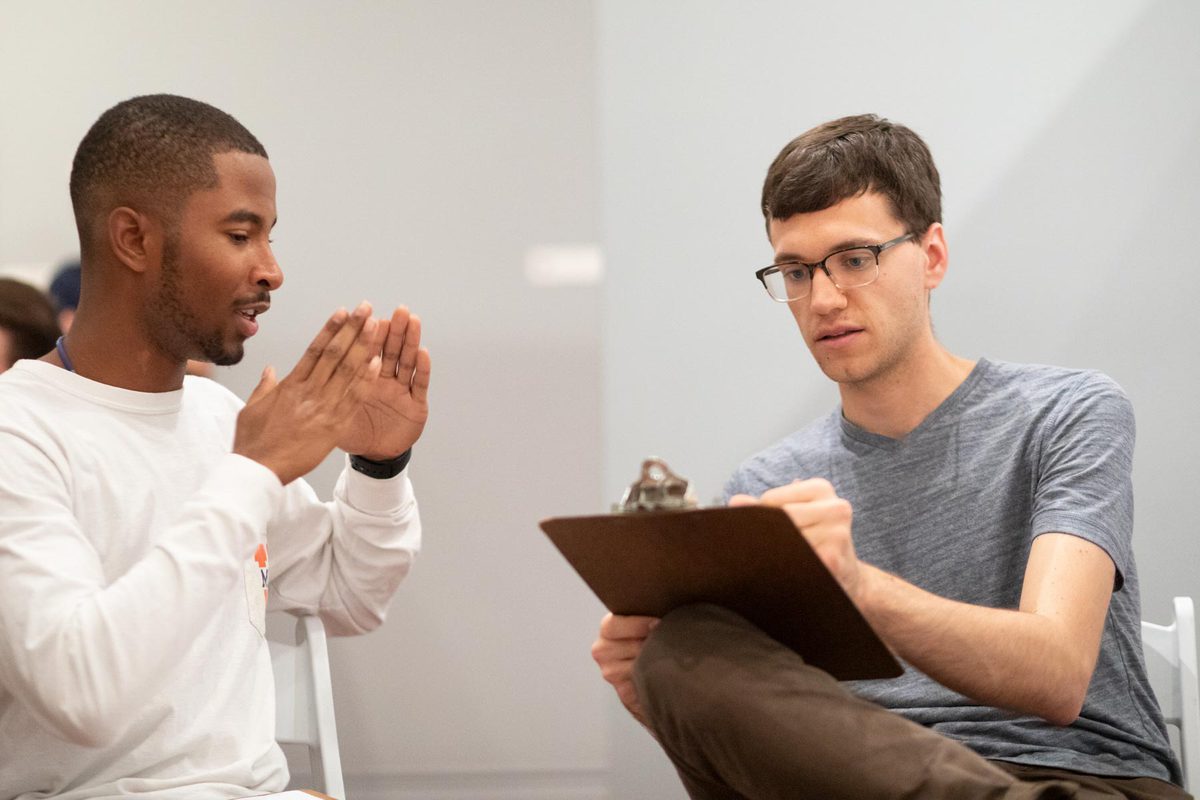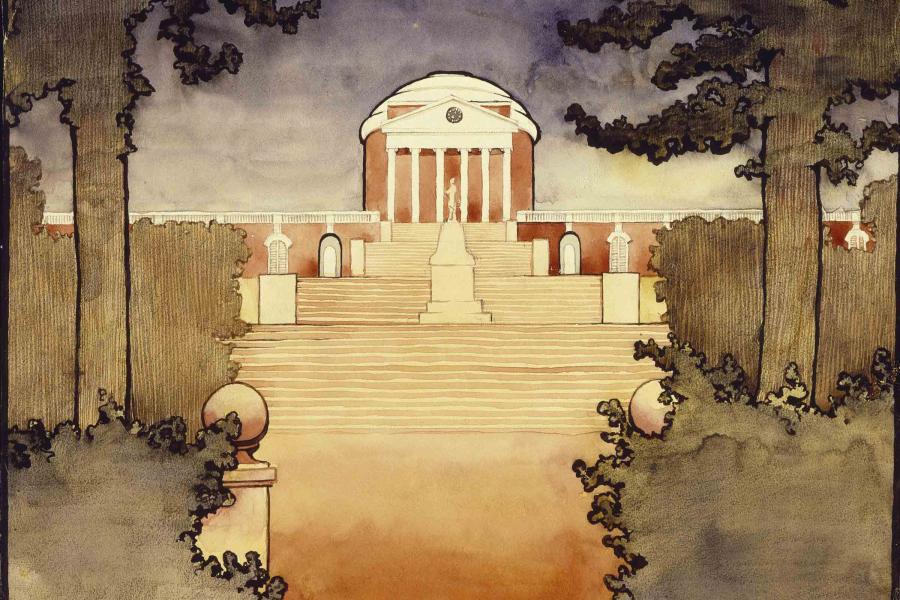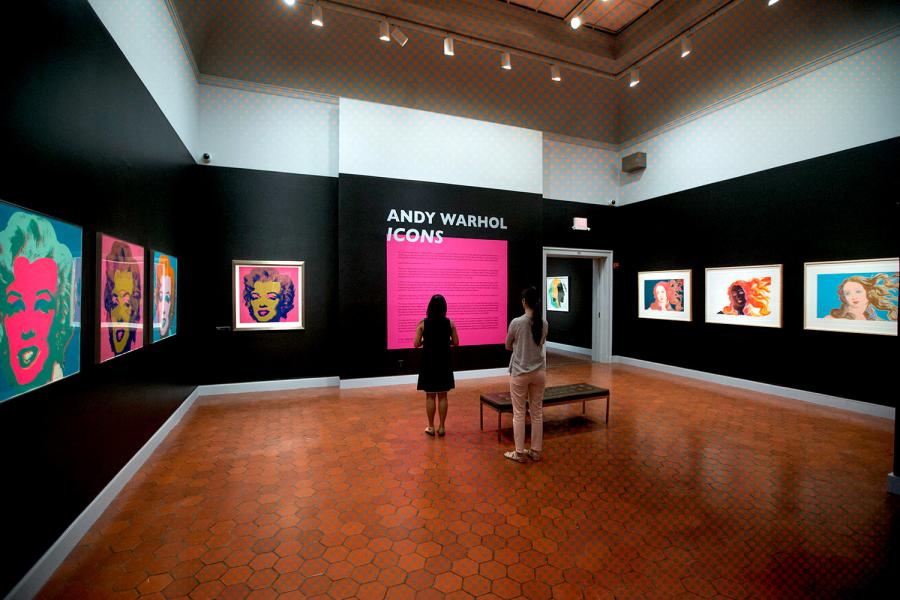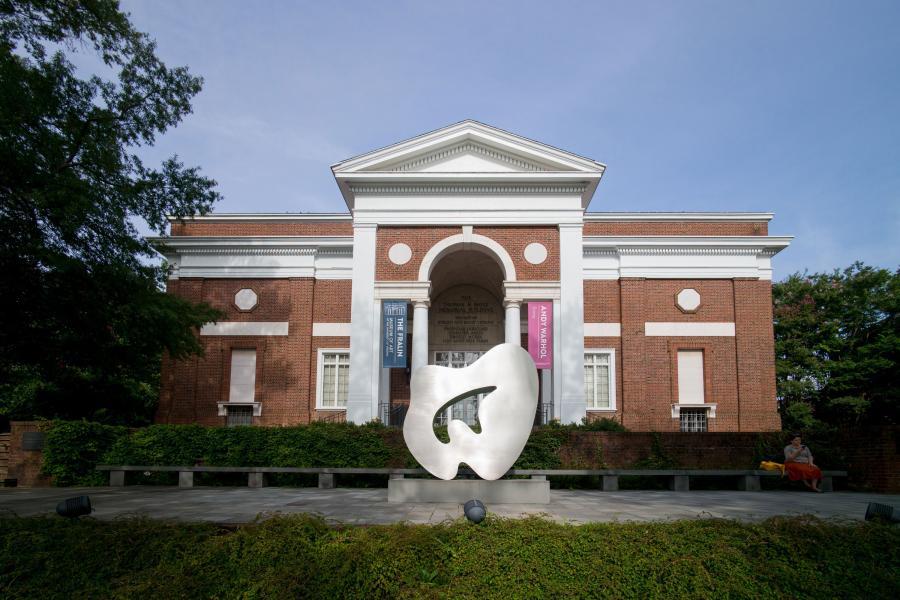The exercise forced students to observe closely and be precise in their wording, to capture exactly what they wanted to convey. It also resembled something they will have to do every day in a clinical setting – listening to a patient describe their symptoms, fitting the pieces together and conveying those symptoms precisely to a wider team of caregivers.
“They are working on a core set of skills used in clinical practice, outside of the clinical setting,” said Childress, a literature scholar who teaches humanities courses for medical students. “In a museum setting, we can slow down that process for them. It helps build reflexes they will need in a clinical setting, when they have to react and learn very quickly.”
When UVA began the program in 2012, Childress said, few medical schools were using visual art. Now, about 100 medical schools have similar programs. In 2016, Childress and Love attended a conference for museum educators at The Museum of Modern Art focused on the topic.
“More and more programs are understanding how visual imagery dominates our perception, and how important it is to be critical in those observations,” Childress said.
Medical student Haley Mead said the day’s exercises were very useful, particularly in helping her understand her own communication style.
“We were able to focus on how we take in and express information, and how others do as well,” she said.
Dr. Chris Moore, also on hand for the workshop, said he thought it was a “wonderful” resource for students.
“They are really building skills important for clinical practice in a different context,” he said. “It’s a good way to get fresh perspective.”
